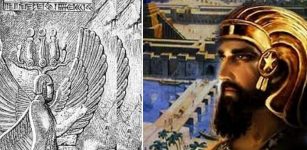Researchers Develop New Ways Of Visualizing Ancient Small Objects By Combining Technologies
Conny Waters - AncientPages.com - Experts have developed new ways to produce high-quality images and models of ancient objects (stone tools, fossils) using video games and computer graphics technologies. computer graphics - with minimal effort and cost.
The ability to visually represent artifacts, whether inorganics like stone, ceramic and metal, or organics such as bone and plant material, has always been of great importance to the field of anthropology and archaeology. For researchers, educators, students and the public, the ability to see the past, not only read about it, offers invaluable insights into the production of cultural materials and the populations who made and used them.
Digital photography is the most used method of visual representation, but despite its speed and efficiency, it often fails to faithfully represent the artifact being studied. In recent years, 3D scanning has emerged as an alternative source of high-quality visualizations, but the cost of the equipment and the time needed to produce a model are often prohibitive.
Experts have developed two new methods for producing high-resolution visualizations of small artifacts, each achievable with basic software and equipment, described in a new paper published in PLOS ONE. The first method, Small Object and Artifact Photography or SOAP, deals with the photographic application of modern digital techniques. The protocol guides users through small object and artifact photography from the initial set up of the equipment to the best methods for camera handling and functionality and the application of post-processing software.
The second method, High Resolution Photogrammetry or HRP, is used for the photographic capturing, digital reconstruction and three-dimensional modeling of small objects. This method aims to give a comprehensive guide for the development of high-resolution 3D models, merging well-known techniques used in academic and computer graphic fields, allowing anyone to independently produce high resolution and quantifiable models
"These new protocols combine detailed, concise, and user-friendly workflows covering photographic acquisition and processing, thereby contributing to the replicability and reproducibility of high-quality visualizations," said Jacopo Niccolò Cerasoni, lead author of the paper from the Max Planck Institute for the Science of Human History in Germany. "By clearly explaining every step of the process, including theoretical and practical considerations, these methods will allow users to produce high-quality, publishable two- and three-dimensional visualizations of their archaeological artifacts independently."
The SOAP and HRP protocols were developed using Adobe Camera Raw, Adobe Photoshop, RawDigger, DxO Photolab, and RealityCapture and take advantage of native functions and tools that make image capture and processing easier and faster. Although most of this software is readily available in academic environments, SOAP and HRP can be applied to any other non-subscription based software with similar features. This enables researchers to use free or open-access software as well, albeit with minor changes to some of the presented steps.
Both the SOAP protocol and the HRP protocol are published openly on protocols.io.
"Because visual communication is so important to understanding past behavior, technology and culture, the ability to faithfully represent artifacts is vital for the field of archaeology," says co-author Felipe do Nascimento Rodrigues, from the University of Exeter.
Even as new technologies revolutionize the field of archaeology, practical instruction on archaeological photography and three-dimensional reconstructions are lacking. The authors of the new paper hope to fill this gap, providing researchers, educators and enthusiasts with step-by-step instructions for creating high quality visualizations of artifacts.
Written by Conny Waters - AncientPages.com Staff Writer





















